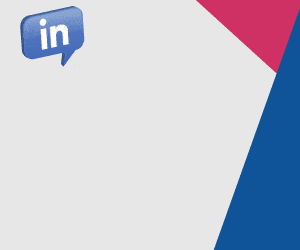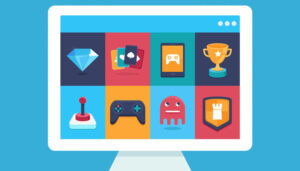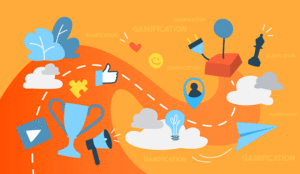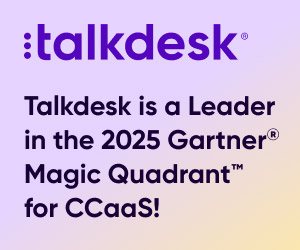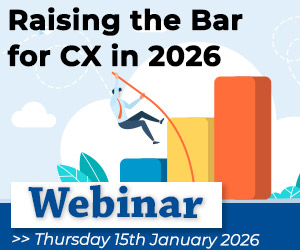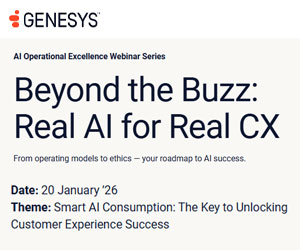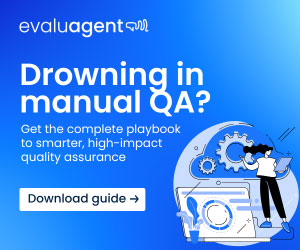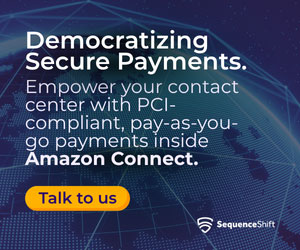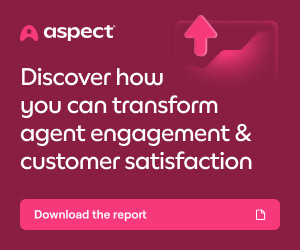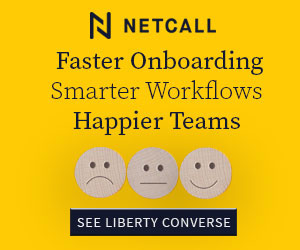Gamification can be used in a contact centre to improve performance, but only when it is implemented well.
In this article, experts from Centrical and other technology providers explain everything a contact centre leader needs to know to get started with gamification.
What Is Gamification?
Gamification is the application of gaming mechanics (such as leaderboards, badges, points, levels, individual and team competitions, recognition, rewards, etc.) in a non-game context.
For instance, gamification can be used in a contact centre to improve performance by providing a personalized experience that motivates agents, which leads to better engagement and a feeling of job satisfaction, which in turn boosts both performance and the customer experience.
Fun Fact – Gamification is derived from ‘The Skinner Box’ experiment
The technique of gamification is derived from The Skinner Box experiment. In 1948 psychologist Fredrick Skinner built a box with a button inside it that would dispense food when pressed, and then placed a pigeon inside the box. When the pigeon pecked the button, it received food.
The experiment was ground-breaking at the time, as pecking the button was a choice, not just a response to stimuli. This provided the basis for the idea of operant conditioning – and so the basis for gamification.
How Does Gamification Work?
In short, gamification taps into both intrinsic (internal) and extrinsic (external) motivators that keep users engaged in working toward their goals.
In the game world, this can mean performing tasks to unlock and pass levels, which leads to rewards and recognition and showing on a leaderboard.
However, in a call centre, goals and KPIs such as learning and development, performance, sales, etc. are tied to gamified elements, such as leaderboards, levels, badges, rewards and recognition, and more.
This drives motivation to complete tasks and achieve goals, increases engagement, and from there, will improve performance, contact centre metrics, and the customer experience.
Did You Know? Gamification Can Be Brought Into the Contact Centre in 2 Ways
Here are the 2 ways gamification can be brought into the contact centre:
1. A Contact Centre Partners With a Gamification Company
A contact centre partners with a gamification company that works with the management team to assign points or monetary values to certain KPIs.
The partner company usually has a portal that an individual agent can log in to and track their own points, their team score, and compare that with their peer group via league tables.
These companies will also handle the redemption of points for prizes via a catalogue or cash payouts at set intervals (e.g. monthly or quarterly), with grand prizes for the winning team and individual at the end of the year.
2. A Contact Centre Purchases Licensed Software That Logs Points
A contact centre purchases (premise-based or cloud) licensed software which is set up to receive KPI data from the various contact centre systems (WFM, quality, CRM sales data, etc.).
Points or monetary values are logged and the results of the work achieved by the agents or the team leader are presented. These systems typically allow for more bespoke prizes to be decided on by the management team, or for directly improving the agents’ compensation.
The Key Features of Gamification
There are several gamification features, including:
- Leaderboards can track user progress (compared to others) on an individual and team level. Leaderboards can help foster an environment of friendly competition, motivating agents to improve their performance.
- Stories and narratives create an immersive, meaningful, and engaging user experience. Stories keep the experience fresh, help users understand the context and goals of the tasks they are completing, and keep users motivated and engaged for the long term.
- Points and rewards are earned for completing tasks. These can be redeemed for rewards, such as virtual goods, tangible prizes, and attaining in-game status, such as badges.
- Progression systems are the mechanics that enable users to level up. This can happen as players complete tasks and earn points. Levelling up gives users a sense of accomplishment and progress, which keeps them motivated and engaged.
- Challenges are tasks that users complete to earn points or rewards. These can be simple or complex tasks, designed to be either individual or collaborative.
- Transparency and feedback are essential. For gamification to be effective over the long term, users need to have an idea of how they are doing ‘in the moment’, and what they need to do to improve. This can be provided via points, leaderboards, progress bars, and other means.
Which Areas of the Contact Centre Can Gamification Help to Improve?
Onboarding, Training, Learning and Development
Tying gamification to onboarding, training, and learning and development initiatives helps drive motivation and engagement with the materials, leading to increased knowledge retention (especially when paired with microlearning).
Gamified learning also helps employees gauge their progress and identify areas of improvement, which helps further drive motivation and engagement.
Create quizzes and knowledge checks on topics that are relevant to agents, such as general onboarding information, new and updated products, services, policies, compliance shifts, etc.
Collaboration
By creating team challenges, contact centre agents are motivated to work together to achieve goals.
Also consider adding a gamified social element, such as social sharing, where employees share contributions of tips and best practices for votes and points.
This can not only help employees learn from each other and improve performance but also drive collaborative behaviour.
Problem-Solving Skills
Contact centres can create gamified challenges for agents that simulate real-world situations where an agent must resolve a customer enquiry using creativity and problem-solving skills.
When rewards and recognition are achieved by the agent, they will be more confident to apply these skills to customer interactions.
Agent Motivation and Engagement
By implementing gamified elements, including leaderboards, levels, friendly competition, and rewards and recognition, you can motivate your agents.
When agents are motivated and complete challenges and initiatives that are meaningful to them, their overall work can seem more meaningful and hold a sense of purpose and can be more engaging.
Additionally, contact centre sales teams often thrive from a sense of healthy competition and beating their best scores, thus delivering strong results.
Contact centre leaders can also unintentionally demotivate their agents. For more information, read our article: 35 Surefire Ways to Demotivate Your Best Agents
Performance
Agents that are motivated to succeed, are engaged in their work, and who are learning and developing their skill set are going to be high performers.
By tying gamification to meaningful tasks and goals, and making KPIs dynamic, leaders can bring about a marked boost in performance in the call centre.
Improved Customer Satisfaction and Metrics
When employees are motivated, engaged, and well-trained, they can deliver stronger performance, benefiting customers and the contact centre’s bottom line.
A happy, engaged agent can deliver an outstanding customer experience, leading to customer loyalty, and improved metrics, such as CSAT and NET Promoter scores.
If you are looking for more information on CSAT, read our article: What Is CSAT? – With a Meaning, Calculations and Great Tips
What to Watch Out for With Gamification Systems
While gamification is a powerful tool to help boost employee motivation, organizations must ensure that it is implemented in a way that motivates agents, keeping them engaged for the long term.
Here are a few pitfalls to avoid:
An “If We Build It, They Will Come” Mentality
When implementing a gamification platform, you’ll want to ensure that your organization optimizes its ROI – and this starts with effective change management.
Clearly communicate this change and offer updates at a regular cadence, explaining what is happening and the timing, the goals of the new practices and expectations, how to use the platform, and how it benefits employees.
The more informed and enthusiastic agents are about the platform, the more likely they are to participate, ultimately driving desired behaviours and boosting performance and the customer experience.
Stopping at the Leaderboard
Organizations don’t always fully consider the importance of design and might simply add a leaderboard – which may do more harm than good.
Often, leaderboards will repeatedly feature the same top performers, which demotivates and disengages employees.
Be sure to go beyond the leaderboard and consider advanced game mechanics, including (but not limited to):
Segmented Leaderboards
Leaderboards often celebrate only the top 5% of agents repeatedly, which is demotivating to the rest of the group – even those who perform well and have improved their performance.
Leaderboards that are segmented by goals will celebrate top performers in different areas, keeping agents much more motivated to stay engaged and improve their performance.
Progress Bars
Enabling agents to see their progress towards a goal is a huge motivator. When agents see their progress, they are much more engaged and productive – and often motivated to achieve the goal even sooner!
Swag and Status Symbols
These provide visual and social proof of an agent’s efforts and achievements – in other words “bragging rights”.
Community Interaction
A social element enables positive interaction and collaboration amongst agents and provides a sense of community and belonging – which is especially important for remote and hybrid teams.
Rewards and Recognition
Rewards or even a shout-out for reaching a goal or for a job well done will ensure that agents continue to be motivated and drive the desired behaviours.
If you are looking for other ways to create a great reward and recognition scheme, read our article: How to Improve Your Employee Reward Schemes – With Examples
Not Tying Gamification to Meaningful Goals or the Overall Employee Experience
Contact centres are increasingly interested in gamification for many reasons, including improving the culture and boosting employee engagement and performance – and as a result, the customer experience.
But gamification on its own is ineffective. The novelty wears off quickly and engagement will drop just as quickly.
By tying gamification to the entire employee experience, starting with onboarding, and including learning and development, performance, career progress, wellbeing, and more, contact centres will create an enjoyable, engaging, and personalized experience that can help decrease attrition while boosting the performance and the customer experience for the long term.
How Much Should I Budget for a Gamification Solution?
Here are some key considerations when scoping out costings for a gamification solution:
- Gamification solutions start from around £15 per agent/month.
- There are usually no up-front costs.
- A solution should cost less than the monetary benefits of a lift in performance, additional sales, reduced attrition, reduced customer churn, etc. There should also be a clear business case that substantiates the cost of the program.
- Don’t forget, you’ll also need to budget for a member of the team to manage the program as a core function. Typically a contact centre will need to budget a minimum of 0.25 to 1 full-time employees (FTE) to manage the program as a core function – or it will lose its impact!
Written by: Centrical and other technology providers
We have a number of other great articles on employee engagement and gamification that you should read next:
- Ways to Make Working in a Contact Centre Fun
- What Is Gamification and How Is It Best Used in the Contact Centre?
- Using Gamification to Increase Contact Centre Engagement
Author: Megan Jones
Reviewed by: Robyn Coppell
Published On: 29th Sep 2023 - Last modified: 2nd Sep 2025
Read more about - Technology, An Introduction to Contact Centres, Centrical, Editor's Picks, Employee Engagement, Gamification, Motivation




